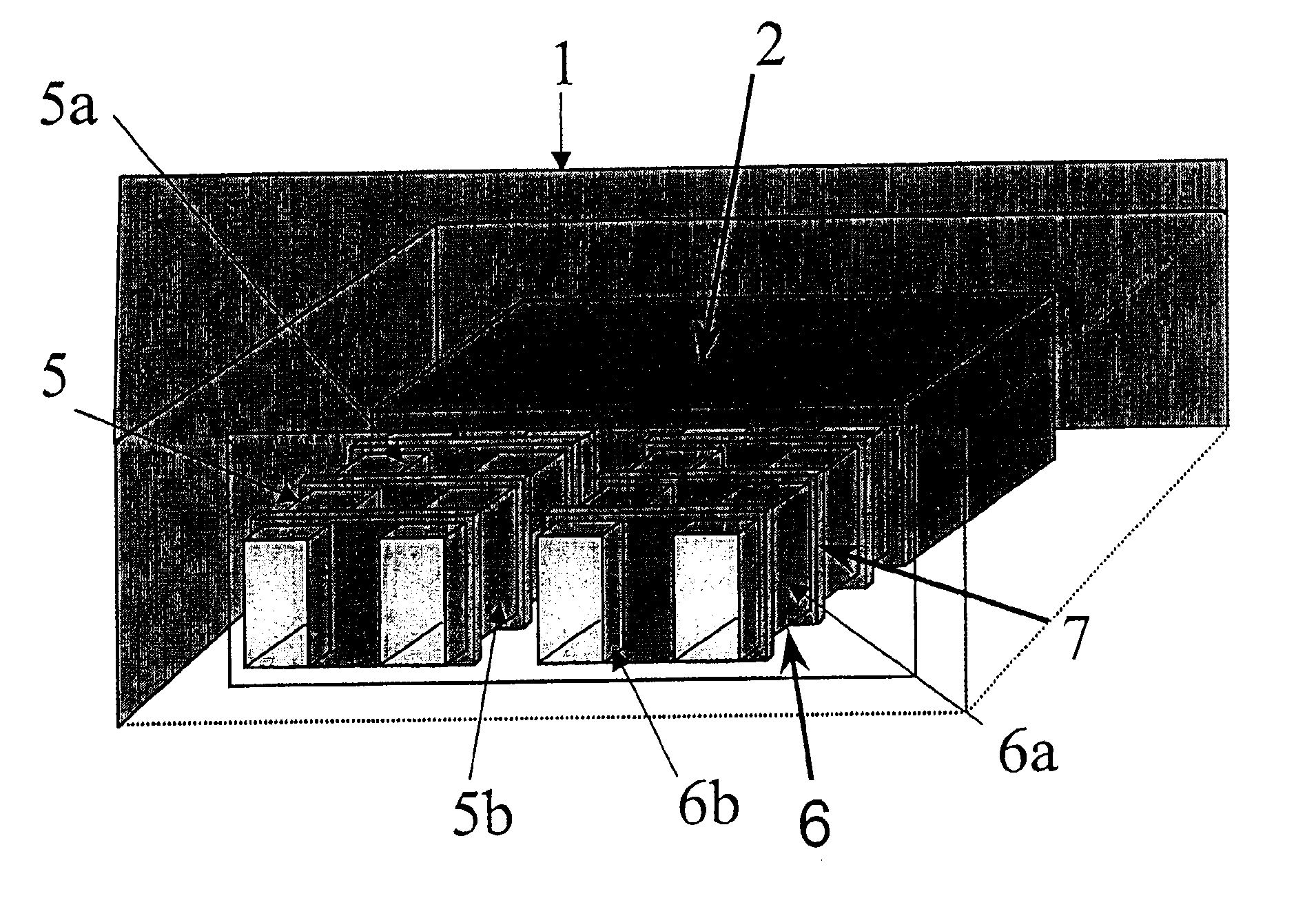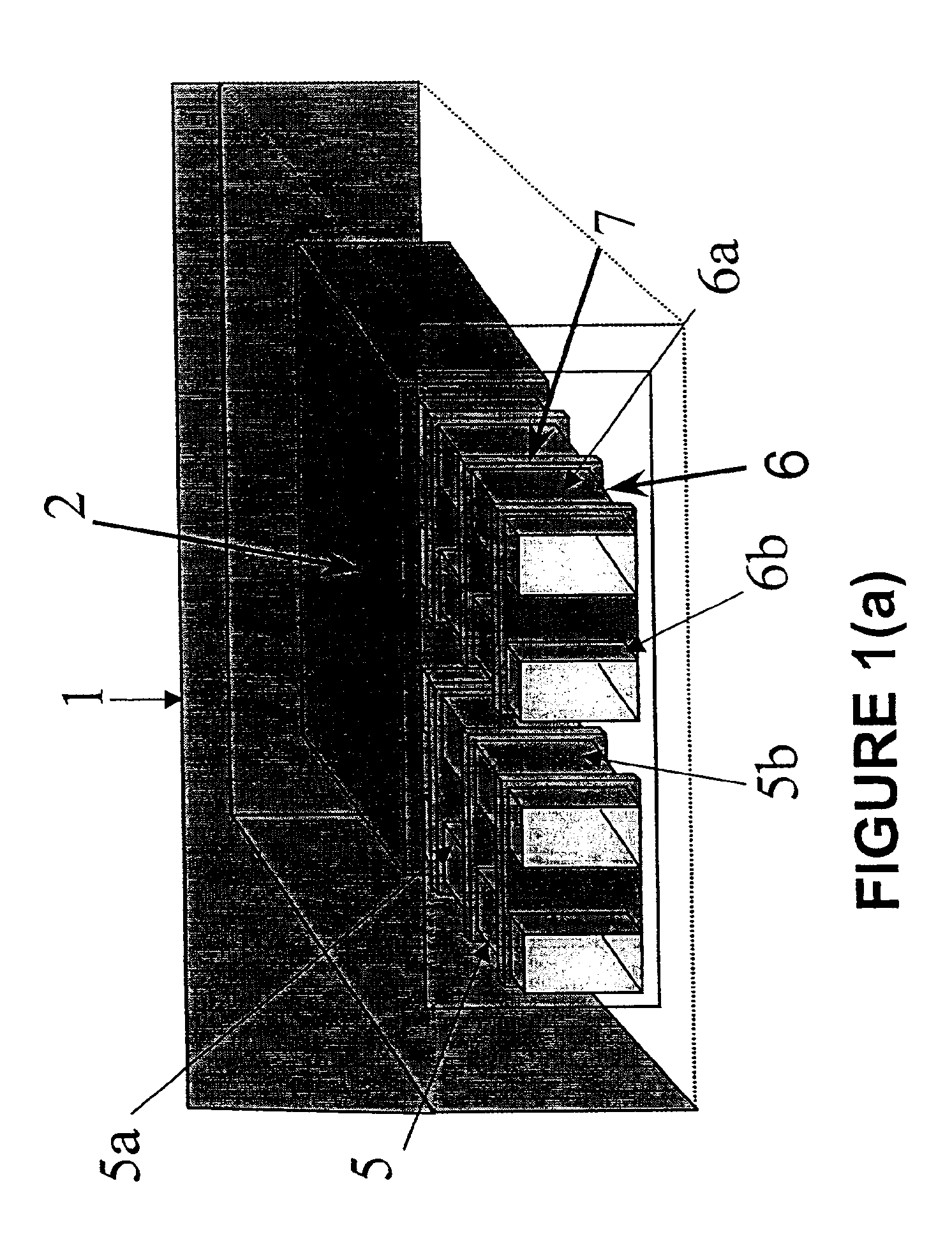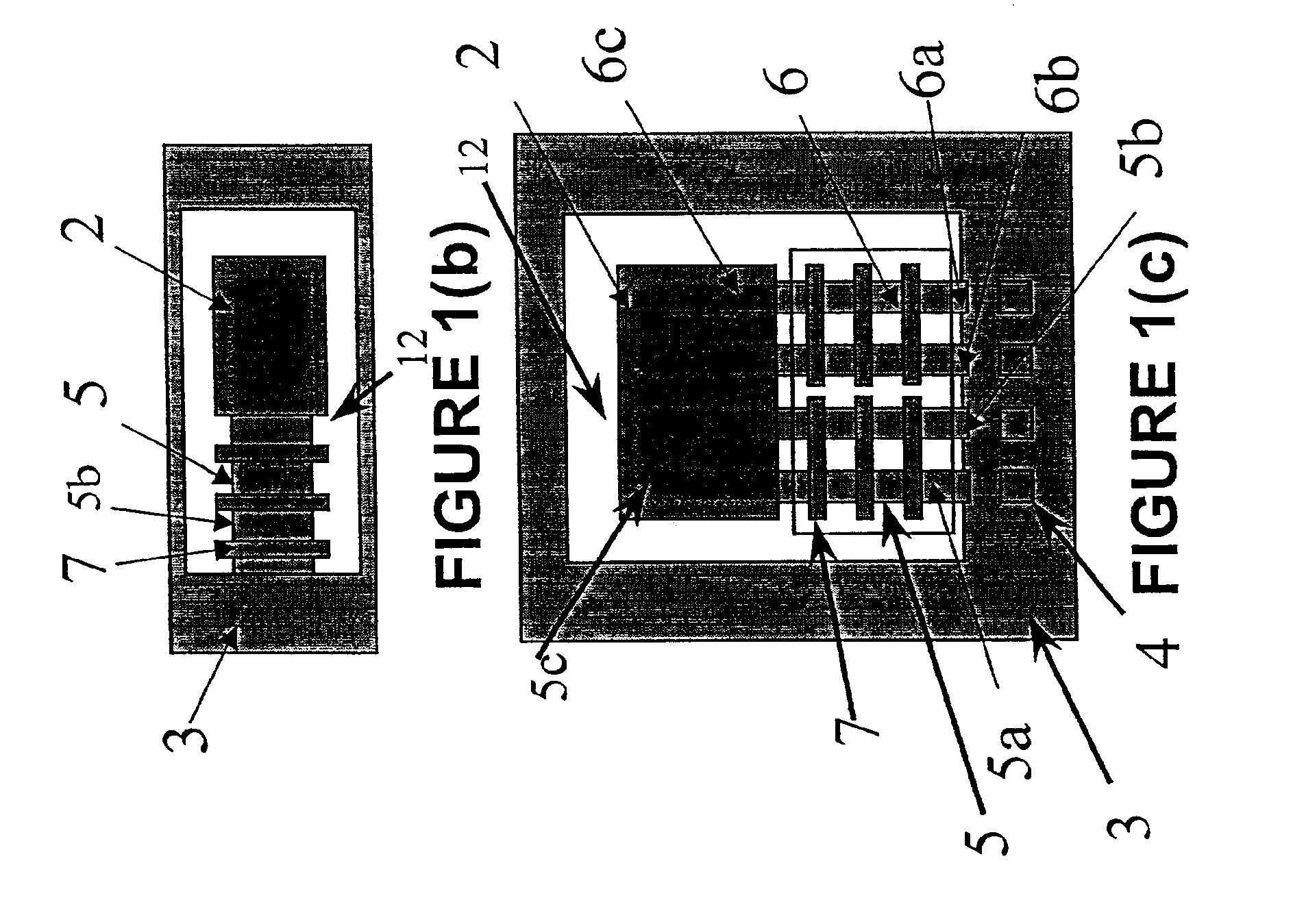Thermally efficient micromachined device
a micromachined device and thermal insulation technology, applied in the direction of hydrogen/synthetic gas production, metal/metal-oxide/metal-hydroxide catalysts, chemical production, etc., can solve the problems of reducing the overall efficiency of the system, unable to maintain the thermal gradient and thermal insulation required for efficient fuel processing, and preventing the use of the device for portable power generation
- Summary
- Abstract
- Description
- Claims
- Application Information
AI Technical Summary
Benefits of technology
Problems solved by technology
Method used
Image
Examples
example 1
[0092]FIG. 8(a) and FIG. 8(b) show the results of a finite element simulation of fluid and heat flow in one fluid conducting tube 205 in a micromachined device constructed according to the present invention and adapted for combusting a fuel. This particular simulation models the heat exchange for a device burning 1 watt of a stoichiometric butane-air mixture at 1652° F. (900° C.) with the substrate held at 86° F. (30° C.), neglecting losses from the exterior surface of the tube and thermally conductive structures. Note, however, that any combustible fuel may be used. The cold stream of fluid enters the inlet portion 205b of the fluid conducting tube 205 from the substrate 203, is preheated by the fluid exiting the thermally conductive region 202, combusts in the intermediate portion of the fluid conducting tube (which is encased in the thermally conductive region 202), and returns to the substrate 203 via the outlet portion 205a of the fluid conducting tube 205. These simulations in...
example 2
[0093]Theoretical analysis of the behavior of the thermally conductive region as an ammonia cracker has been carried out. Results of this analysis are provided in FIG. 9. The system was assumed to use the combustion of hydrogen from a fuel cell anode to supply the energy to achieve elevated temperatures in the thermally conductive region for the endothermic ammonia cracking reaction. It was assumed that enough catalyst would be present to crack 30 sccm of ammonia at 1652° F. (900° C.). The temperature of the thermally conductive region was varied to reflect the need for higher cracking temperatures at higher ammonia flow rates. An optimal operating point for the device based on the increased importance of conductive thermal losses for lower power operation and poor recuperation of exhaust heat at higher power levels and ammonia flow rates is expected.
example 3
[0094]As depicted in FIG. 10(a), one particular approach to using the described gas-phase reactor of the present invention in a portable power application is the thermal decomposition of a fluid reactant into fluid products. In this example the fluid reactant is ammonia gas and the fluid products are hydrogen and nitrogen for use in a fuel cell. Hydrogen is the preferred fuel of many fuel cell systems. It is, however, difficult and dangerous to store and transport. This approach allows ammonia to be transported, which results in increased energy storage density.
[0095]The ammonia decomposition approach would use the thermally insulating inlet portion 5b of a fluid conducting tube 5 to carry ammonia gas into intermediate portion 5c of the fluid conducting tube 5. The intermediate portion 5c is encased in the thermally conductive region 2, which is comprised of silicon or another material of high thermal conductivity. The thermally conductive region 2 is maintained at an elevated tempe...
PUM
| Property | Measurement | Unit |
|---|---|---|
| thickness | aaaaa | aaaaa |
| wall thickness | aaaaa | aaaaa |
| wall thickness | aaaaa | aaaaa |
Abstract
Description
Claims
Application Information
 Login to View More
Login to View More - R&D
- Intellectual Property
- Life Sciences
- Materials
- Tech Scout
- Unparalleled Data Quality
- Higher Quality Content
- 60% Fewer Hallucinations
Browse by: Latest US Patents, China's latest patents, Technical Efficacy Thesaurus, Application Domain, Technology Topic, Popular Technical Reports.
© 2025 PatSnap. All rights reserved.Legal|Privacy policy|Modern Slavery Act Transparency Statement|Sitemap|About US| Contact US: help@patsnap.com



